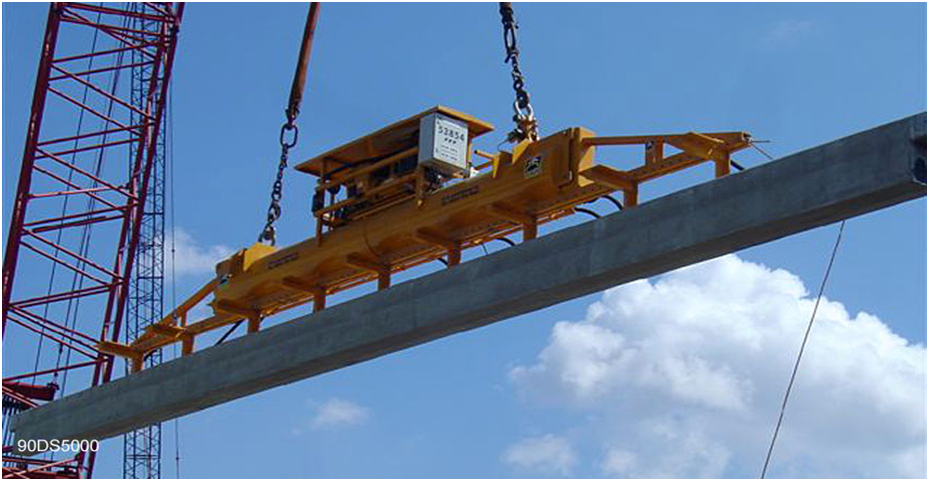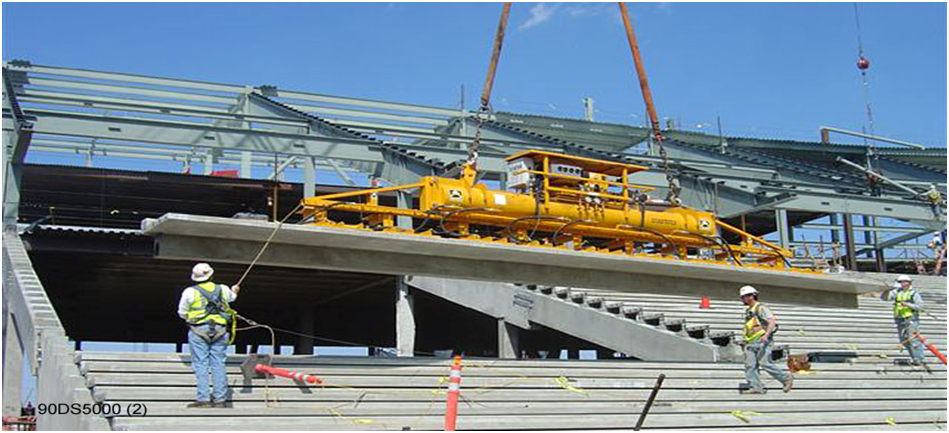应用于体育场建设的真空吊具
For the construction of the stadium stands, from the production of prefabricated panels to the construction, we have designed a complete lifting solution. The scheme consists of two different vacuum spreaders. One for demolding, lifting and turning over in the production area. The other is for the stadium construction site.
Why lift with vacuum instead of hook?
Initially, all operations during production and construction were done with hooks. The hook is installed during production and removed after construction. Using vacuum lifting, no hooks are required, saving labor, time and investment. Also, the concrete elements are not damaged.
Tom McGregor, Hansen’s operations manager at the time, said: “These spreaders are easy and fast to use and we are very satisfied, we have done more than 8,000 lifts with the equipment without any problems. When we use the Aerolift lifting technology, we have Lifting and rotating quickly and safely, without the need for embedded parts, is our main consideration. Once these stadium projects are completed, we will still use these spreaders to lift other components in the plant. (CPI Worldwide 2008)
Vacuum spreader in production workshop
In the production area, vacuum spreader is used for demoulding, lifting and turning over components. The demolded member has an arc, but this is no problem for a vacuum spreader. If demoulding with hooks, the hardening time before demolding is at least 24 hours. Due to the dispersion of the surface stress of the suction cup, the mold can be released after 8 - 10 hours. Greatly increase production speed. Vacuum spreaders are used to place components on trucks and transport them to the construction area.
Vacuum spreader on stadium construction site
In the stadium, vacuum spreader and heavy-duty crane work together. The crane was placed in the center of the stadium and was able to reach every corner. In the design of the vacuum spreader, we need to consider many aspects of the component geometry, the component is regarded as a T-shaped geometry, and the offset and change of the center of gravity are calculated. Through the professional design of the vacuum spreader, the lifting process always maintains an absolute balance.
Source:
CPI Worldwide (2008) The perfect application of vacuum handling in a company in the United States (No. 4, 2008). See http://www.cpi-worldwide.com/en/journals/artikel/2000
illustrate
- U.S.
- 2014
- 11 tons
- 180 degrees (3 vacuum lifts and 2)
product
- precast concrete stand
- More instructions on lifting solutions
- Number of spreaders: 3
- According to American standards
- Dual vacuum system
-

-

项 目
Projects
联系我们
扫一扫,添加我们了解更多。


- 首页
- 什么是真空吸吊
- 行业应用
- 项目
- 服务




